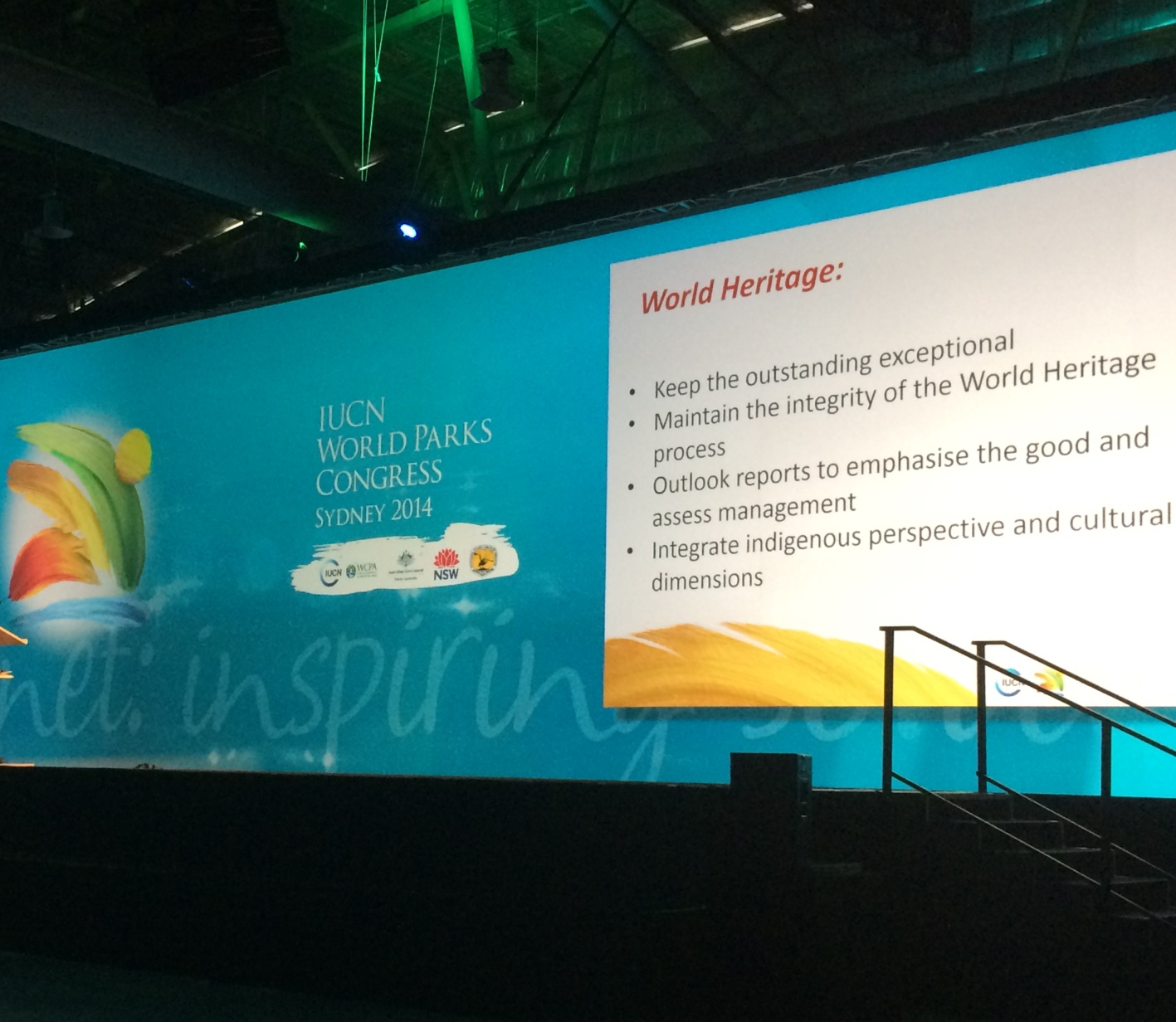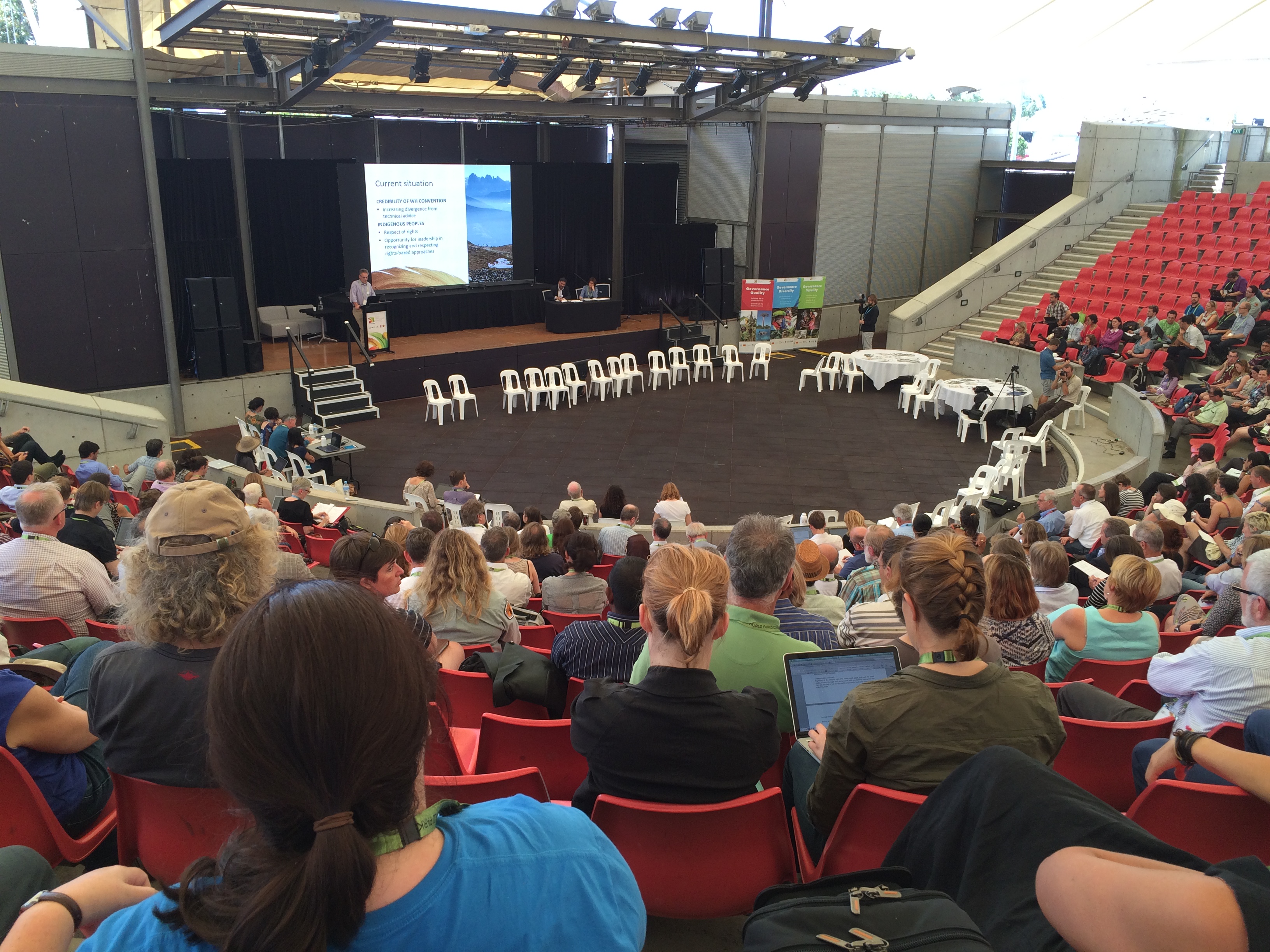A promise made for the future of World Heritage
The aspirations for World Heritage laid out in the World Parks Congress’s ‘Promise of Sydney’ place World Heritage sites as crucial drivers of change, and models of excellence to show how protected areas can succeed as inspiring solutions for nature and people.
World Heritage was a centrepiece of the IUCN World Parks Congress 2014, as one of four cross-cutting themes, in addition to eight streams. The decennial event aims to set the course for protected areas over the next 10 years through its official output: the Promise of Sydney.
The promise of World Heritage sites agreed at the World Parks Congress is to secure the highest level of international protection for our most iconic protected areas, and to provide exemplary leadership within the protected areas movement on land and in the oceans.
Despite their iconic status and global recognition, World Heritage sites are subject to the same threats and pressures facing protected areas worldwide: they are suffering from the impacts of climate change and are increasingly under pressure from large-scale development projects, including some very damaging industrial extractive activities.
In order to change the dynamic for World Heritage, we all have to act together and make the conservation of these outstanding places a global, joint responsibility shared by governments, private sector and industry (including extractives), civil society, local communities and indigenous peoples. Delivering the promise of World Heritage is the litmus test: if we allow these sites to be degraded, we have clearly failed as a conservation movement.
The World Heritage Convention has a unique opportunity to deliver a leadership role for the coming decade and to do this the Convention must ensure it maintains its credibility. In this line, IUCN has launched the first ever global assessment of natural World Heritage – the IUCN World Heritage Outlook – at the IUCN World Parks Congress in Sydney.
The IUCN Outlook aims to shift the focus of World Heritage from listing to demonstrating success in providing the highest level of international protection. World Heritage sites are recognised for the first time for their good conservation outlook, and are challenged to spread their inspiring practice across the World Heritage system as well as the wider protected areas network. We must improve the outlook for all World Heritage sites to ensure that they maintain their Outstanding Universal Value, and also ensure their equitable management and shared benefits for the local communities and indigenous peoples that depend upon them.
The IUCN World Parks Congress also saw the launch of the Benefits of Natural World Heritage report, which assesses for the first time the benefits and ecosystem services provided by the world’s iconic places. The study confirms the life supporting role of natural World Heritage sites and their contribution to economies, climate stability and human well-being.
The global context for World Heritage has evolved significantly since the 2003 World Parks Congress in Durban and the 2014 Congress now provides the platform to advance towards a future where World Heritage plays a central role in demonstrating the value of protected areas to humanity as one of the best investments for the planet and for us.
As part of the Promise of Sydney, the World Heritage cross-cutting theme delivered key messages and recommendations for Innovative Approaches for change. You can read the full document here and discover all the Innovative Approaches drafted by the 12 streams and themes of the IUCN World Parks Congress 2014 here.







